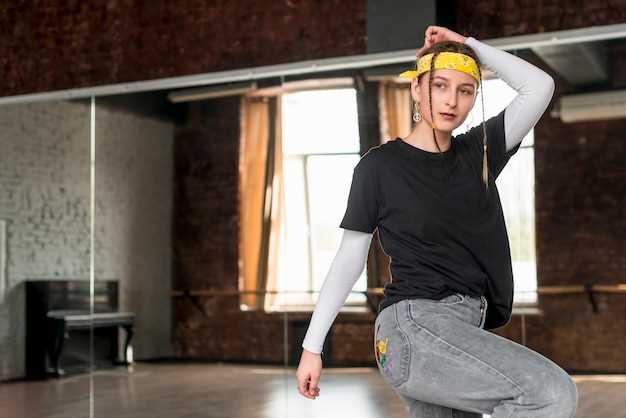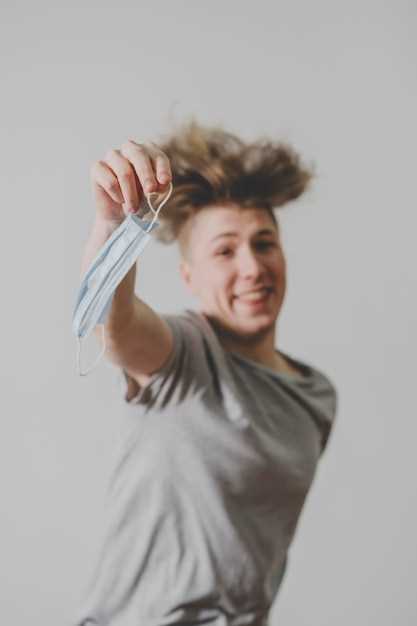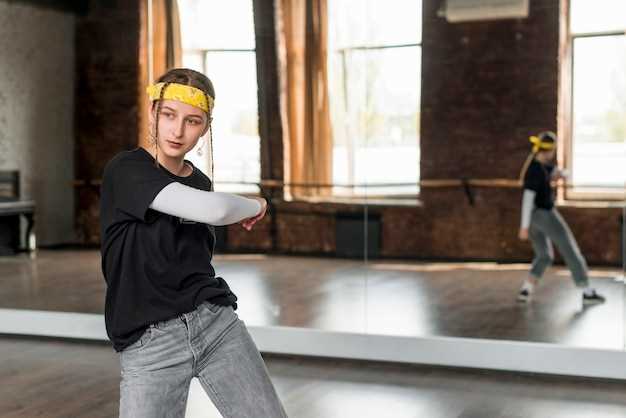Movement and artistic expression have always been fundamentally linked. While some see structured routines, others perceive a canvas where imagination takes flight. The fusion of physical motion with mental exploration opens an array of possibilities. Each step, each gesture becomes a statement, a form of storytelling without words. Yet, facilitating this connection between the body and artistry is not always straightforward.
Children and adults alike often face barriers that hinder their inventive spirit. These obstacles can be rooted in education, social norms, or even personal insecurities. However, there’s an incredible potential lying dormant within everyone, waiting to be unlocked. By embracing the principles of physical expression, we can break free from these constraints. It’s fascinating how a simple act of moving one’s body can lead to profound creative breakthroughs.
Moreover, integrating rhythmic motion with active imagination serves as a powerful tool in personal development. This approach nurtures emotional intelligence, fosters team collaboration, and enhances problem-solving skills. In environments where innovation is key, such practices can transform ordinary individuals into extraordinary thinkers. Beyond the obvious benefits, this union of mind and body cultivates a sense of fulfillment and joy, enriching life experiences.
The journey to unlocking one’s artistic potential is indeed unique for everyone. Strategies and methods can vary, yet the essence remains consistent: liberation of the mind through the versatility of the body. Whether in schools, studios, or community centers, fostering an environment where this amalgamation thrives is critical. Ultimately, this practice offers more than mere enjoyment; it becomes a vital part of personal and collective growth.
Encouraging Innovation Through Dance Education
Incorporating movement and rhythm into learning fosters inventive thinking. Dance sparks the imagination. Students explore beyond traditional classroom boundaries. They see the world differently. Creativity blossoms in this dynamic environment. The fusion of movement and thought can uncover unique ideas and solutions to complex problems, setting the stage for innovative outcomes.
Breaking Mental Barriers

Students often face mental blocks. Dance shatters these. It’s liberating. They express themselves freely. Their minds open up. New perspectives emerge. The connection between body and mind is profound, encouraging a flow of fresh ideas that might otherwise remain suppressed.
Integration of Other Disciplines

Combining dance with other subjects offers more than just artistic expression. It blends analytical and expressive skills. Math concepts become visible. History comes alive. Science principles are illustrated. Lessons are more memorable when they involve physical activity. Students develop a deeper understanding and retention of the material, which can lead to innovative applications in various fields.
Fostering Creative Thinking in Dance Classes
Exploring innovative thought processes in dance instruction can transform a routine session into an artistic journey. Various methods can spark originality among students. Each approach aims to unlock their potential and nurture individual expression.
Encouraging Improvisation
- Introduce spontaneous movement exercises.
- Allow freedom to interpret music in unique ways.
- Create an environment that values experimentation over precision.
- Emphasize personal expression over standard techniques.
- Break away from traditional structures occasionally.
Such practices help dancers tap into their innate creativity, fostering self-confidence and artistic growth.
Use of Varied Music Styles
- Expose students to different genres and rhythms.
- Challenge them to adapt their movements accordingly.
- Encourage exploration of unfamiliar tempos and beats.
- Discuss how different music influences emotional expression.
This exposes dancers to a broader range of stimuli, helping them to innovate and develop a more diverse movement vocabulary.
Incorporating Storytelling
- Ask dancers to convey narratives through movement.
- Use themes and characters from literature or films.
- Integrate emotions and concepts into dance routines.
- Assign creative projects that combine dance with storytelling.
Such techniques help dancers connect their movements with emotions and narratives, leading to richer, more expressive performances.
Collaborative Choreography
- Allow students to work together on creating routines.
- Encourage sharing of ideas and constructive feedback.
- Mix different skill levels for more dynamic interactions.
- Foster a safe space for all contributions to be valued.
Collaborative efforts can lead to unexpected and innovative results, leveraging the unique strengths of each student.
Ultimately, these strategies help cultivate a mindset open to exploration and invention. It’s about creating a space where dancers feel safe to take risks and express their individuality. The balance of structure and freedom in dance classes can lead to remarkable artistic breakthroughs.
Effective Methods for Enhancing Imagination
Unleashing the mind’s power leads to unexpected, fascinating results. Sometimes, it’s just a matter of changing perspectives. Other times, stepping outside the usual patterns makes a difference. Experimentation and curiosity play pivotal roles. Identifying unique approaches and fostering an open mindset proves beneficial. Delving deeper, specific strategies can significantly amplify imaginative capacities.
Utilizing Elements of Nature

Nature serves as an expansive, ever-changing source of inspiration. Embracing the outdoors stimulates sensory experiences, unveiling fresh ideas. Consider these practices:
- Walks in Diverse Environments:Transition from city parks to forest trails.
- Observation of Flora and Fauna:Study plants, insects, and wildlife in their habitats.
- Journaling Outdoor Experiences:Capture thoughts and reflections while immersed in nature.
- Mindful Breathing Exercises:Practice deep breathing surrounded by natural sounds and sights.
Incorporating Play and Movement
Play and physical expression trigger innovative thought processes. Engaging in play isn’t just for children; adults benefit too. Here are some methods:
- Improvisational Games:Participate in activities without preplanning or scripting.
- Freeform Movement Sessions:Move freely, without structured steps or routines.
- Interactive Storytelling:Collaboratively create stories with others, adding spontaneous elements.
- Exploring Different Dance Styles:Engage in various genres, like contemporary or interpretative dance.
Combining these approaches, one unlocks deeper layers of imaginative thought. Embracing both structured and spontaneous activities, and immersing oneself in diverse environments, cultivates a fertile ground for innovation. This synergy of elements creates an atmosphere where the mind can truly flourish, unfettered and free, ready to explore new horizons.
Benefits of Creative Movement
Moving in imaginative ways offers numerous advantages. It’s a delightful and engaging activity. It’s not just about steps and rhythms. Instead, it’s an exploration of self-expression and freedom. Every twist and turn holds potential.
Mental Benefits
Engaging in inventive motion stimulates the mind. It fosters problem-solving skills. Participants think outside the box. They find new ways to move. This non-linear thinking can transfer to daily life, helping solve real-world problems creatively and efficiently.
Physical Benefits
Unique movement exercises the body differently. It enhances flexibility, strength, and balance. Different styles activate different muscle groups. This comprehensive workout leads to overall physical improvement. Additionally, it can help in maintaining a healthy weight and reducing the risk of chronic diseases.
Emotional Benefitsare also significant. Movement acts as a powerful outlet for feelings. It allows for the release of pent-up emotions. Practitioners often experience reduced stress and anxiety. In this way, personal wellness is substantially improved, resulting in a more positive outlook on life.
Finally, social interaction also plays a key role. When people engage in these activities together, they build stronger relationships. They share experiences and encourage each other. This communal effort fosters a sense of belonging and support.
In conclusion, the advantages of inventive motion are vast. From cognitive to emotional, from physical to social, the benefits are profound and multifaceted. It truly enriches the lives of those who partake.
Exploring Creative Dance Programs for All Ages
Finding avenues for artistic expression can be rewarding for individuals of all ages. This section delves into various programs designed to cultivate movement and imagination. Such activities can engage children, adults, and seniors alike. They promote a sense of freedom and personal interpretation. Whether in a structured class or a more relaxed setting, there are numerous possibilities to discover.
Programs for Children
Young minds are naturally curious and energetic. Dance classes tailored for kids often incorporate playful themes and simple routines. These sessions can help develop basic motor skills while providing a fun outlet. Additionally, many programs emphasize teamwork and social interaction. The goal is to create a space where children can explore movement in a joyful environment, enhancing both physical and emotional growth.
Opportunities for Adults and Seniors
Older participants can benefit significantly from participation in movement-based programs. Classes for adults often focus on contemporary styles or even more traditional forms like ballroom. For seniors, gentle movements and low-impact exercises are key components. Such classes not only provide physical exercise but also stimulate mental sharpness and promote community bonding. No matter the age, finding a suitable program can lead to a fulfilling and enriching experience.
In conclusion, there are myriad programs available that cater to a wide range of age groups. Each one offering unique opportunities for self-expression and physical vitality. Exploring these options can open doors to new forms of enjoyment and personal development.
Innovative Dance Curricula for Children
New instructional methods for children’s movement classes can foster original expression. Designing progressive programs can inspire young minds. These methods go beyond traditional lessons. They offer dynamic activities that captivate attention. Interactive elements play a crucial role in making sessions engaging.
Integrating Technology and Movement
Modern tools can transform the way children learn to move. Interactive LED floors, motion-detecting cameras, and virtual reality can be integrated. This blend of technology and physical activity not only keeps kids entertained but allows them to explore movement in creative ways. For instance, virtual dance-offs or choreographed light shows can enhance spatial awareness and coordination.
Combining Storytelling and Movement
Stories can be a powerful medium for teaching body movement. Narratives provide context and purpose to physical activities. Children acting out tales through movement connect emotionally and physically to the material. This method also promotes teamwork as they work together to bring stories to life. It is beneficial for cognitive and social development, encouraging them to think outside the box.
Adult Programs Promoting Artistic Expression
Programs tailored for adults offer a diverse range of opportunities. These initiatives support personal growth and self-discovery. Participants gain new skills and explore different forms of artistic movement. Both beginners and experienced movers find value in joining. There’s something for everyone.
One notable aspect is the variety of styles available. From contemporary to jazz, each genre offers something unique. No two classes are the same. This diversity allows participants to experiment. They find their own voice in the movement, connecting deeply with each style.
Interactive workshops play a crucial role. They provide a platform for sharing ideas and collaborating. Group activities enhance individual experiences. Adults feel motivated and inspired by their peers. The sense of community fosters a supportive environment.
Additionally, performances and showcases offer a stage for expression. Participants prepare and present their routines. It’s more than just a recital. It’s a celebration of their journey and progress. Friends and family witness their dedication and growth.
Instructors are pivotal in this journey. They bring their expertise and passion to each session. Guiding and challenging participants, they help unlock hidden potential. Their feedback is constructive, encouraging continuous improvement. This mentorship is invaluable, creating lasting impacts.
Ultimately, these programs are transformative. They go beyond physical movement. They touch the emotional and mental aspects of life. Participants leave with a heightened sense of self and accomplishment. They discover new perspectives and a renewed passion for the arts.
Inclusivity in Dance Education
Fostering an inclusive environment within movement-based education is essential. It brings together individuals of diverse backgrounds, abilities, and experiences. This blend enriches the learning experience for all participants. It builds a supportive community where everyone feels valued. Such an approach promotes mutual respect and understanding.
When planning lessons, it’s vital to consider accessibility. This might involve modifying movements to accommodate different physical abilities. Equally important is respecting cultural differences and integrating a variety of dance styles. Here’s an outline of practices to ensure a welcoming atmosphere:
- Adapting routines to suit various skill levels and physical abilities
- Incorporating diverse musical genres and dance traditions
- Using inclusive language that respects all identities
- Providing options for non-verbal participation
- Encouraging feedback to continuously improve the inclusivity of the program
Teachers play a crucial role. They must lead by example and show genuine commitment to inclusion. Building trust is key. Open dialogues about differences foster acceptance. With patience and empathy, educators can transform the learning space into one where every student thrives.
Diversity is not just about who is included, but also about what is shared and celebrated. When every participant sees their uniqueness as an asset, the entire group benefits. Different perspectives drive innovation, leading to unexpected outcomes. This collective exploration makes the journey more rewarding for everyone involved.
Video:
「What is creativity in dance?」 | Yuko NAKANO | TEDxUTokyoSalon
「What is creativity in dance?」 | Yuko NAKANO | TEDxUTokyoSalon by TEDx Talks 1,885 views 7 years ago 19 minutes
Q&A:
How can dance help in fostering creativity in children?
Dance encourages creativity in children by providing them with an expressive outlet. Through dance, children can explore different movements, rhythms, and improvisational techniques that allow them to think outside the box and develop new ideas. This creative exploration helps them build confidence in their inventive abilities and improves their problem-solving skills in other areas of their lives.
Do you need any special equipment or space to encourage creativity through dance at home?
Not necessarily. You can encourage creativity through dance at home using minimal resources. A safe and open space where children can move freely is ideal. Play some music and let your child improvise movements. You might also provide props like scarves or ribbons to inspire different types of movement. The key is to create an environment that supports free expression and fun.
What are some specific dance activities that can boost creativity?
Several dance activities can help boost creativity. One example is improvisational dance, where children respond to music without any predefined steps. Another is storytelling through dance, where children create movement sequences to represent different characters or plots. Dance games like ‘freeze dance’ can also encourage creative thinking, as children have to come up with new poses or movements when the music stops and starts again.
Can dance be used to encourage creativity in adults as well?
Absolutely! Dance can be a powerful tool for encouraging creativity in adults. Participating in dance classes or engaging in free-form dance allows adults to break away from their regular routines and think creatively. It can also serve as a stress reliever, which can further enhance one’s ability to generate new ideas. Group dances or partner dances can add a social element that stimulates creative communication and collaboration.